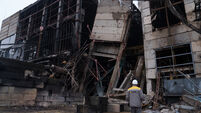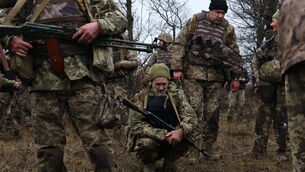Wind-driven fires batter Texas Panhandle
Wildfires that have scorched nearly 1 million acres of the bone-dry Texas Panhandle spread even more, fanned by strong wind gusts that reached as high as 52 mph.
Authorities said the fires travelled as far as 40 miles to the north-east yesterday, marching close to the Oklahoma border.
Authorities urged residents in six towns to evacuate, and cautioned that the fire could reach Oklahoma.
“When fire is advancing at 40 mph, you can’t put it out,” said Borger Fire Chief Gayland Darnell. “It would be like trying to stop a tornado.”
The winds, which blew away ash and then created sandstorms, were the strongest since wildfires fuelled by 60 mph winds started racing across the plains north-east of Amarillo on Sunday.
Nearly 3,000 residents in Lipscomb, Higgins, Barton Corner, Booker, Darrouzett and Follett were asked by fire officials to evacuate after a blaze that started near Borger began spreading. At least 10 homes in Lipscomb County were threatened, said Rachael Novier, a spokeswoman for Governor Rick Perry.
Lipscomb County Judge Willis Smith declined to order mandatory evacuations. “We are in its path if it crosses,” he said. “But there’s a lot of manpower.”
There were 10 active fires yesterday, and firefighters responded to more than 200 new fires for a second consecutive 24-hour period.
Eleven people have died in the fires that have scorched about 840,000 acres since the first day, and animal health officials have estimated the number of dead horses and cattle at 10,000. Perry was scheduled to tour the area today.
Slight relief came yesterday afternoon with brief rain in the Borger and Pampa areas, overcast skies and higher humidity, but state officials said conditions remained critical because of the strong winds.
In their efforts to quell the wildfires, some departments have used soapy water because it sticks to vegetation better and doesn’t evaporate as quickly. Firefighters have also set back fires and used bulldozers to clear land in an effort to rob advancing fires of fuel.
Helicopters have dropped hundreds of thousands of gallons of fire retardant and water along firelines.














